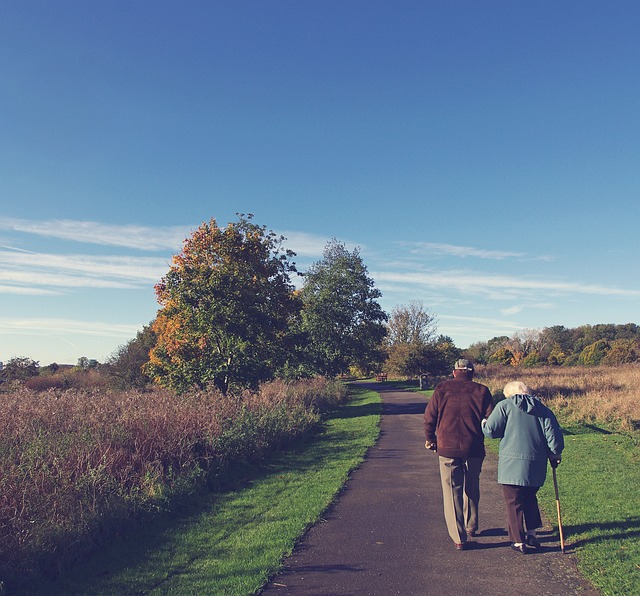As you gracefully move through the seasons of life, it becomes increasingly important to prioritize your health and well-being. In the article “Aging Gracefully: The Impact of Regular Exercise on Senior Health,” we will explore the profound benefits that regular exercise can have on the physical, mental, and emotional well-being of seniors. Discover how incorporating a consistent exercise routine can help you maintain vitality, improve mobility, boost cognitive function, and cultivate a positive outlook on aging. It’s time to unlock the secret to aging gracefully and embrace a lifestyle that will truly enhance your golden years.
Benefits of Regular Exercise for Seniors
Regular exercise is essential for seniors as it offers a wide range of physical and mental health benefits. By engaging in regular physical activity, seniors can improve their physical fitness, enhance their mental health, reduce the risk of chronic diseases, maintain a healthy weight, and boost immune function.
Improve Physical Fitness
Engaging in regular exercise can significantly improve physical fitness for seniors. It helps improve cardiovascular health, strengthens muscles and bones, and increases overall endurance and flexibility. Regular exercise can also help seniors maintain mobility and reduce the risk of falls, which is particularly important as we age.
Enhance Mental Health
Exercise has a profound impact on mental health and well-being.

Reduce Risk of Chronic Diseases
One of the primary benefits of regular exercise for seniors is the reduced risk of chronic diseases. Physical activity has been shown to lower the risk of heart disease, stroke, diabetes, and certain types of cancer. It also helps to manage chronic conditions such as high blood pressure, osteoporosis, and arthritis. Engaging in regular exercise can significantly improve seniors’ quality of life and prevent the onset of various health conditions.
Maintain Healthy Weight
Regular exercise plays a crucial role in maintaining a healthy weight for seniors. As metabolism naturally slows down with age, exercise becomes increasingly important for managing weight. By engaging in physical activity, seniors can burn calories, increase muscle mass, and maintain a healthy body composition. This helps reduce the risk of obesity and related health issues such as diabetes and heart disease.
Boost Immune Function
Exercise has a positive effect on immune function for seniors. Regular physical activity can enhance the body’s defense against illnesses and infections by boosting the immune system. This is particularly important for seniors, whose immune systems may be weaker. By engaging in regular exercise, seniors can improve their overall immunity and reduce the risk of infections.
Types of Exercise for Seniors
Different types of exercises cater to specific aspects of senior health. By incorporating a variety of exercises into their routine, seniors can achieve a well-rounded approach to fitness.
Aerobic Exercises
Aerobic exercises, also known as cardiovascular exercises, are essential for seniors. These exercises increase the heart rate, improve lung function, and strengthen the cardiovascular system. Walking, swimming, cycling, and dancing are a few examples of aerobic exercises that seniors can enjoy.
Strength Training
Strength training exercises help seniors build muscle strength and maintain bone density. These exercises can be done using resistance bands, dumbbells, or bodyweight exercises. Strength training is crucial for preventing muscle loss, improving balance, and reducing the risk of falls.
Flexibility Exercises
Flexibility exercises focus on improving joint mobility and range of motion. Activities like yoga, stretching, and tai chi can help seniors enhance their flexibility and maintain healthy joints. Regular flexibility exercises can also aid in reducing muscle stiffness and improving posture.
Balance Exercises
Balance exercises are particularly important for seniors to prevent falls and maintain stability. Simple exercises such as standing on one leg, heel-to-toe walk, and yoga poses that improve balance can significantly enhance overall stability and reduce the risk of accidents.
Tips for Safe and Effective Exercise for Seniors
While exercise offers numerous benefits, it is crucial for seniors to engage in safe and effective practices. By following these tips, seniors can ensure they get the most out of their exercise routine while minimizing the risk of injury.
Consult with Healthcare Professional
Before starting any exercise program, it is essential to consult with a healthcare professional. They can assess your current health status, provide personalized advice, and help create an exercise plan that is suitable for your specific needs and abilities.
Start Slow and Gradually Increase Intensity
For seniors who may not have engaged in regular exercise before, it is essential to start slowly and gradually increase the intensity of the workouts. This allows the body to adjust and adapt to the new physical demands over time. Starting with low-impact activities and gradually incorporating more challenging exercises is an effective approach.
Use Proper Equipment and Techniques
Using proper equipment and techniques is crucial for ensuring safe and effective exercise. Seniors should invest in appropriate footwear, clothing, and any necessary supportive equipment. Learning and practicing correct exercise techniques can help minimize the risk of injury and maximize the benefits of each exercise.
Listen to Your Body
Paying attention to your body’s signals is key to safe and effective exercise. Seniors should be mindful of any pain, discomfort, or unusual sensations during exercise. It is important to modify or stop an exercise if it causes pain or exacerbates any existing health conditions. Listening to your body and adjusting the intensity or type of exercise accordingly is crucial.
Stay Hydrated and Fuel Your Body
Proper hydration is essential during exercise, especially for seniors. It is important to drink water before, during, and after a workout to prevent dehydration. Additionally, seniors should fuel their bodies with nutritious foods to provide the necessary energy for exercise and recovery.
Take Rest Days
Rest days are just as important as exercise days. Seniors should incorporate rest days into their exercise routine to allow their bodies to recover and prevent overexertion. Rest days give muscles and joints time to heal and regenerate, reducing the risk of injury and promoting better overall fitness.
Overcoming Barriers to Exercise for Seniors
While exercise offers numerous benefits, several barriers may prevent seniors from engaging in regular physical activity. By identifying and addressing these barriers, seniors can overcome them and enjoy the advantages of exercise.
Lack of Motivation
Lack of motivation is a common barrier to exercise for seniors. It can be challenging to find the drive to engage in physical activity, especially if it is not part of an established routine. To overcome this barrier, seniors can find an exercise buddy or join group activities to stay motivated and accountable. Setting goals and rewarding oneself for achieving milestones can also boost motivation.
Physical Limitations
Physical limitations, such as chronic pain, mobility issues, or existing health conditions, can make exercise more challenging. However, it is crucial to find exercises that accommodate these limitations. Seniors can work with healthcare professionals or exercise specialists who can develop modified exercises to suit their specific needs and abilities.
Fear of Injury
Fear of injury can be a significant barrier to exercise, particularly for seniors who may worry about falls or accidents. By working with healthcare professionals and starting with low-impact exercises, seniors can gradually build confidence and trust in their bodies. Assisted exercise programs or classes specifically designed for seniors can also provide a safe and supportive environment for physical activity.
Financial Constraints
Financial constraints can limit seniors’ access to exercise resources and facilities. However, there are many affordable or free options available. Local senior centers often offer exercise programs at a reduced cost or for free. Additionally, walking or exercising in outdoor spaces, joining community walking groups, or utilizing online exercise programs can provide cost-effective alternatives.
Lack of Social Support
Lack of social support can make exercise feel isolating or less enjoyable for seniors. Building a support network of family, friends, or like-minded individuals can help seniors overcome this barrier. Engaging in group exercise classes, joining walking groups, or participating in community-based activities can provide a sense of companionship and motivation.
Creating an Exercise Routine for Seniors
Creating a personalized exercise routine is essential for seniors to achieve their fitness goals and maintain a healthy lifestyle. By following these guidelines, seniors can develop a routine that suits their individual needs and preferences.
Set Realistic Goals
Setting realistic and achievable goals is crucial when creating an exercise routine. Start by identifying specific outcomes you want to achieve, such as improved strength, flexibility, or cardiovascular endurance. Break down these goals into measurable and attainable milestones to keep track of progress and stay motivated.
Choose Activities You Enjoy
Exercise should be enjoyable to promote adherence and long-term commitment. Seniors should choose activities they genuinely enjoy, whether it’s walking in nature, taking dance classes, practicing yoga, or playing a sport. By incorporating activities that bring joy, seniors are more likely to stick to their exercise routine.
Schedule Exercise into Your Routine
Scheduling exercise into your daily or weekly routine helps make it a priority. Choose specific times and days to dedicate to exercise, making it a non-negotiable part of your schedule. Treating exercise as an important appointment and committing to it will ensure consistency and regularity.
Mix Up Your Exercises
Variety is key to preventing monotony and maintaining interest in exercise. Seniors should incorporate different types of exercises, such as aerobic, strength training, flexibility, and balance exercises, into their routine. Mixing up activities not only keeps the routine fresh and enjoyable but also engages different muscle groups and promotes overall fitness.
Track Your Progress
Tracking progress is important for staying motivated and monitoring improvements. Seniors can keep a journal or use fitness tracking apps to record their exercise sessions, set goals, and track their progress over time. Celebrating accomplishments and milestones can reinforce the positivity of regular exercise and encourage seniors to continue their fitness journey.
Community Resources for Senior Exercise
Seniors can find a wealth of community resources to support and enhance their exercise routine. These resources provide opportunities for social interaction and access to specialized programs designed for seniors.
Senior Centers
Senior centers are excellent resources for seniors looking to engage in physical activity. Many senior centers offer exercise classes specifically designed for older adults, ranging from low-impact aerobic workouts to strength training and balance exercises. These classes often cater to different fitness levels and provide a supportive environment.
Exercise Classes for Seniors
Exercise classes specifically designed for seniors are beneficial for both physical fitness and social interaction. Many fitness centers or community organizations offer specialized exercise classes tailored to seniors’ needs, including water aerobics, yoga, tai chi, and chair-based exercises. These classes often provide modifications and support, ensuring seniors can safely and effectively participate.
Outdoor Recreational Activities
Taking advantage of outdoor recreational activities is another excellent way for seniors to stay active. Walking, hiking, gardening, and biking are just a few examples of enjoyable outdoor activities that provide physical exercise while enjoying nature. Many communities have parks, trails, and green spaces that offer accessible options for seniors of all fitness levels.
Walking Groups
Joining a walking group can provide seniors with a sense of camaraderie and social support while engaging in physical activity. Walking groups often organize regular walks, allowing seniors to explore their community, meet new people, and stay motivated. This low-impact exercise is accessible to most individuals and can be easily integrated into daily routines.
Online Exercise Programs
Online exercise programs have become increasingly popular and provide convenience and accessibility for seniors.

Benefits of Exercise for Common Senior Health Issues
Regular exercise can provide significant benefits for seniors who are dealing with common health issues that often arise with aging.
Arthritis
Exercise is crucial for managing arthritis symptoms and improving joint health. Gentle exercises such as swimming, walking, and tai chi can help reduce pain, improve flexibility, and strengthen muscles around affected joints. Regular exercise can also help maintain a healthy weight, which alleviates pressure on joints.
Osteoporosis
Weight-bearing exercises, such as walking and strength training, are essential for seniors with osteoporosis. These exercises help maintain bone density, reduce the risk of fractures, and improve balance. Incorporating exercises that challenge balance, such as yoga or tai chi, can also be beneficial for seniors with osteoporosis.
Heart Disease
Regular exercise is essential for maintaining heart health and reducing the risk of heart disease. Aerobic exercises such as walking, swimming, or cycling can improve cardiovascular health, lower blood pressure, and reduce cholesterol levels. It is crucial for seniors with heart disease to consult with their healthcare professionals before starting an exercise program.
Diabetes
Exercise plays a vital role in managing diabetes by improving insulin sensitivity and blood sugar control. Regular aerobic exercises, strength training, and flexibility exercises can help regulate blood sugar levels and reduce the risk of complications associated with diabetes. Seniors with diabetes should monitor their blood sugar levels and adapt their exercise routine accordingly.
Depression
Exercise has a powerful impact on mental health, including reducing symptoms of depression. Engaging in regular exercise releases endorphins, improves mood, and reduces stress and anxiety levels. Seniors battling depression can integrate exercise into their daily routine to experience the psychological benefits it offers.
Exercise and Cognitive Function in Seniors
Regular exercise not only benefits physical health but also has a positive impact on cognitive function in seniors. Engaging in physical activity can enhance memory, attention, and overall cognitive abilities.
Improvement of Memory and Cognitive Abilities
Exercise has been shown to promote neuroplasticity, the brain’s ability to form new connections and adapt. This can lead to improvements in memory and cognitive abilities. Seniors who engage in regular exercise often experience better cognitive performance in areas such as attention, information processing, and learning.
Reduction in Risk of Dementia and Alzheimer’s Disease
Studies have found that exercise can significantly reduce the risk of developing dementia and Alzheimer’s disease. Regular physical activity improves blood flow and oxygen supply to the brain, reduces inflammation, and promotes the growth of new nerve cells. These mechanisms contribute to better brain health and a reduced risk of cognitive decline.
Positive Effects on Brain Structure and Function
Exercise has been shown to have positive effects on brain structure and function. It promotes the growth of new blood vessels, increases the volume of certain brain regions, and enhances connectivity between different parts of the brain. These structural and functional changes can contribute to improved cognitive function and overall brain health in seniors.
The Importance of Socialization in Senior Exercise
Socialization plays a vital role in senior exercise, contributing to overall well-being and mental health. Engaging in exercise with others can combat feelings of loneliness and isolation, foster new friendships, and enhance the sense of community.
Combating Loneliness and Isolation
Regular exercise provides an opportunity for seniors to interact with others and combat feelings of loneliness and isolation. Group exercise classes and activities designed for seniors create a supportive environment where individuals can connect, share experiences, and develop meaningful relationships. This social interaction can significantly improve mental well-being and overall quality of life.
Forming New Friendships
Senior exercise programs and community-based activities offer a platform for forming new friendships. By engaging in regular physical activity with others, seniors can meet like-minded individuals who share similar interests and goals. The shared experience of exercise provides common ground for building connections and friendships, leading to an enriched social life.
Enhancing Overall Well-being
Socialization through exercise has a positive impact on overall well-being. Interaction with others can improve mood, reduce stress, and increase motivation to continue with regular exercise. The support and encouragement from fellow participants can also boost self-confidence, making exercise a more enjoyable and rewarding experience.
Conclusion
Regular exercise is crucial for seniors to maintain their physical and mental well-being. By engaging in various types of exercises, seniors can improve physical fitness, enhance mental health, reduce the risk of chronic diseases, and maintain a healthy weight. Overcoming barriers to exercise, creating a personalized exercise routine, and utilizing community resources can support seniors in achieving their fitness goals. Additionally, exercise offers remarkable benefits for seniors dealing with common health issues such as arthritis, osteoporosis, heart disease, diabetes, and depression. The positive effects of exercise extend to cognitive function, promoting memory, reducing the risk of dementia, and improving overall brain health. Lastly, the importance of socialization in senior exercise cannot be overstated, as it combats loneliness, fosters new friendships, and enhances overall well-being.



